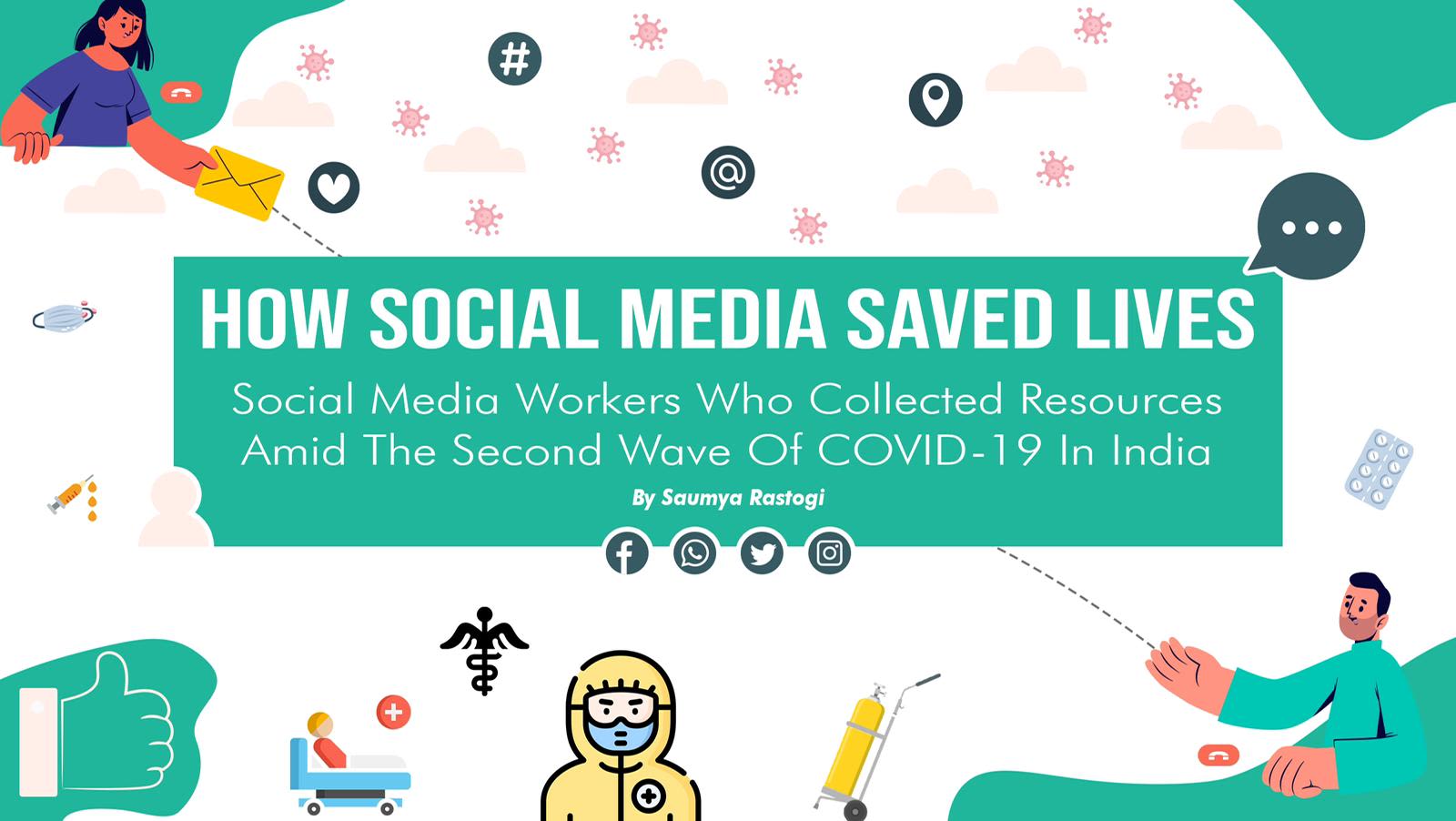
COVID-19 hit India in January 2020 and since then the country has reported more than 34 million cases and more than 450,000 deaths. It has the second-highest number of cases in the world after the United States and the third-highest number of deaths in the world, according to Our World in Data.
Everything was getting back to normal in January 2021 when infection rates started to drop, Prime Minister Narendra Modi declared India as one of the countries that had successfully controlled coronavirus.
However, a second wave beginning in March 2021, was much more devastating.
There was a shortage of vaccines, hospital beds, oxygen cylinders, and other medical supplies in parts of the country. There was also a public outcry against the government which was accused of mismanagement and ignorance of data.
A forum of scientific advisers set up by the government warned Indian officials in early March of a new and more contagious variant of the coronavirus taking hold in the country, Reuters reported in May during the second wave.
Citing government negligence and lack of resources, citizens took it upon themselves to collect resources for patients. They used social media to do so.
Here are some of their stories.

Aanya Wig, 22, has always been involved with social work since she was in high-school. She has been passionate about various issues like women’s empowerment, reproductive rights, and gender equality.
She is the founder of Girl Up Rise, Lady Shri Ram College, which is a non-governmental organization working towards women’s rights. She is also a member of Women Indian Chamber of Commerce’s Anti Sexual Harassment Council.
She feels social work is not only her calling but what she needs to do. Along with that she is also doing a postgraduate diploma from The Indian Society of International Law to further her career in humanitarian work.
"However, starting Covid Fighters India was not out of motivation but desperation," said Wig.
Looking back at what was happening in the second wave, Wig said she saw Instagram requests getting flooded on her feed. She quickly realized that people were not getting connected to those who could help. And that institutions were not doing much about it.
She knew somebody had to step up. Moreover, she was fearful that she could end up in the same position as people needing help and her small following on social media could not have helped her.
Wig and a friend of hers, Arnab Biswas, saw a high inflow of information on the internet and realized that people who were in an emergency situation would not have time to go through all of the screenshots and phone numbers to get help.
So they started a resource base collection. "Our work was to amplify already existing resources, connect people to resource providers and verify the leads," said Wig.
Wig and her friends tapped into social media platforms like Twitter, Instagram, Discord and WhatsApp. They made a Twitter and Instagram bot to automate posting of leads as soon as they were verified.
They also made a volunteer outreach form. Starting small, they eventually had an outreach of hundreds of thousands of people.
Resources were not only limited to the physical needs of people. Their Discord community had multiple channels for mental health doctors, grief sharing, and happy news.
Wig said that what started out of necessity, soon became a community of people helping each other out.
Everyday, from 10 am to 12 am, Wig and her team would verify resources by contacting them and updating a spreadsheet after fulfilling all the parameters. And from 12 am to 4 am, they would function more as an SOS team, because that was the time they would get the maximum number of calls.
Wig said they hit a number of roadblocks. Leads would get exhausted in minutes as the availability of resources was much less in comparison to the people who needed it. Moreover, volunteers who could dedicate enough time to the effort were missing.
Wig, too, underwent mental exhaustion. "For the first three weeks, I would go to sleep with calls, and wake up to calls. I had no time to step back and think about my personal feelings," she said. She would go to sleep at six in the morning and get 4 hours of sleep. "I was scared to be away from my phone because I did not know when the next call would come. I became completely immersed. It was difficult to set boundaries." Being a college student, she could not even give time to her studies.
There was one night when within 15 minutes, they lost three people because they did not get access to oxygen.
We saw that person's oxygen going from 66 to 45 to nine. Then, we got the news that they were no longer there. But we didn't have time to follow up with them or take it in as to what had happened. In the next 15 minutes we were able to help three people get home ICU setups.
The need for oxygen more than doubled in India between April and May 2021, according to a report by The Bureau of Investigative Journalism. As the second wave dragged on in the region, other countries started to overtake India’s increase in demand.
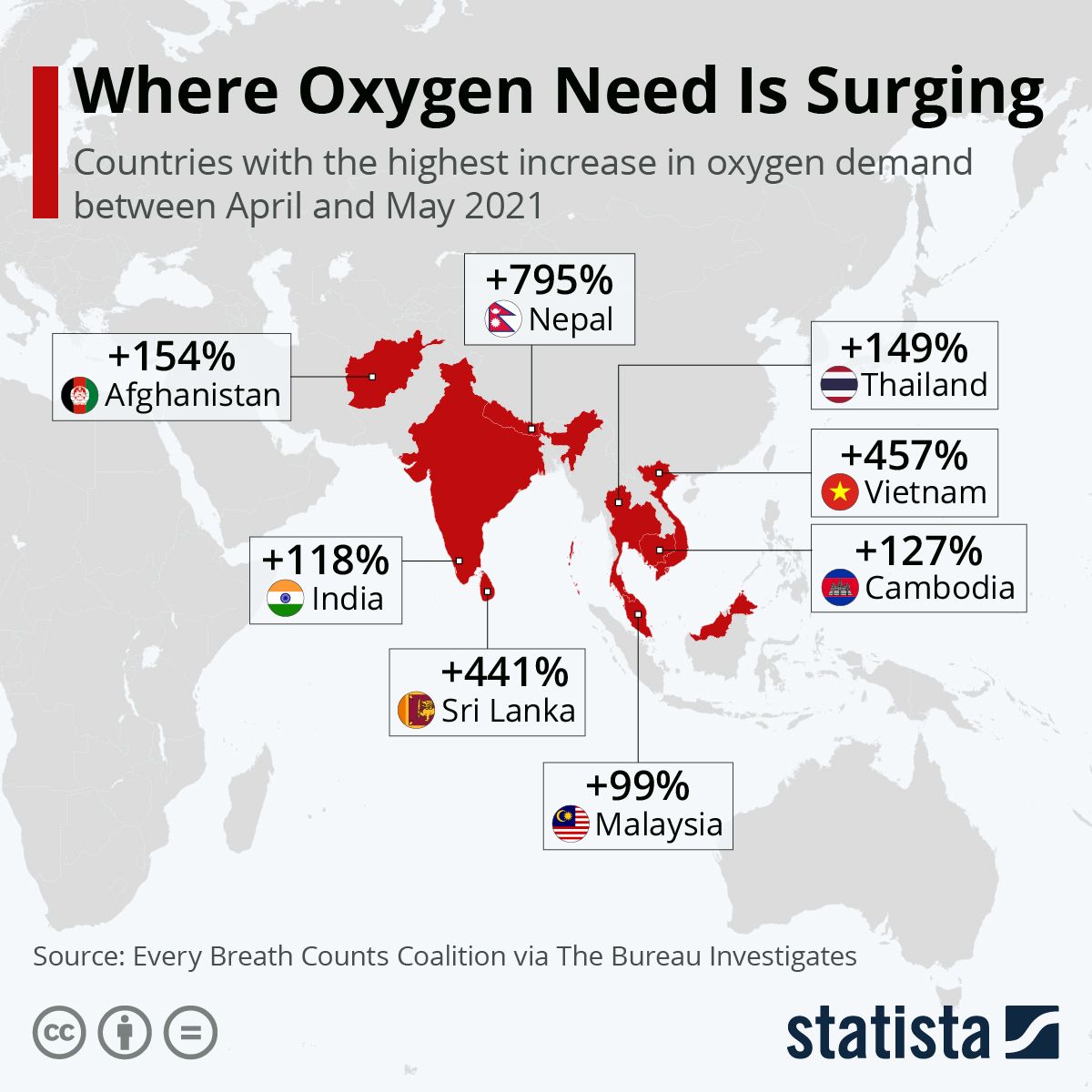
To overcome mixed feelings of loss and hope, Wig and a small group of volunteers began having short Zoom meetings. A lot of her volunteers had experienced loss so talking about it helped. "It was like an alcoholic’s anonymous group where people just talk and there are no therapists. People would just have fun and talk to each other. Even if there was an SOS call that time, we would solve it together. A few minutes of normalcy away from all of this is what brought us closer."
During that time, the government had been clamping down on such operations because of unverified leads and black-marketing of goods.
There were times during our initiative where we were so scared because of institutional clamp down. I did not think about even putting down my thoughts or personal experiences on social media because of this during that time.
Fortunately, Wig's team did not face this as they were working with strict guidelines. They also took help of lawyers to put a disclaimer on their spreadsheet.
After the second wave ended, Wig decided to stop their operations in July. "The community platform and resources are still there. We don't update them anymore. We still help cases which come up sometimes," she said.
One of the reasons they stopped was because cases had come down drastically and resources outpaced the number of people needing them.
Wig said she still has past trauma after all that happened. "I am still coping."
She hopes that the third wave never comes.
Preparation is relatively better to deal with such a large crisis, but I doubt we are going to be fully prepared. Given the lack of protocol and the amount of crowds interacting globally, the impact and scale of the third wave could be unprecedented.
Indian health experts said that it is premature to say if the country is about to face the third wave, reported India.com. "However, the kind of carelessness that India has seen in the last few months, if the Omicron enters the country, it may have a detrimental effect," the report added.
The variant was first identified in Karnataka state in two COVID-19 patients on Dec. 2, 2021, said the Union Health ministry in India.
"All primary contacts and secondary contacts of both the cases have been traced and are being tested," Lav Agarwal, an health official told in a news briefing.
Local media alleges that five contacts of one of the men had also tested positive for the variant.
“The government said it had no immediate plan to authorise booster vaccine shots despite demands from lawmakers in parliament,” Reuters reported.
"We must not deviate from our goal of administering two doses in each eligible individual," said senior health official Vinod Kumar Paul to Reuters.
Wig said she is extremely scared.
I don’t want to go through it again. I am done. I am tired. But if the situation arises, I’ll try my best to help.
"Detection of the Omicron virus in India was expected. People in India need to be calm and composed but at the same time we should be vigilant," Dr Dhiren at the Gangaram Hospital told the Economic Times.
He added that with their initial reports, they can say that it is a milder variant as compared to the other variants.
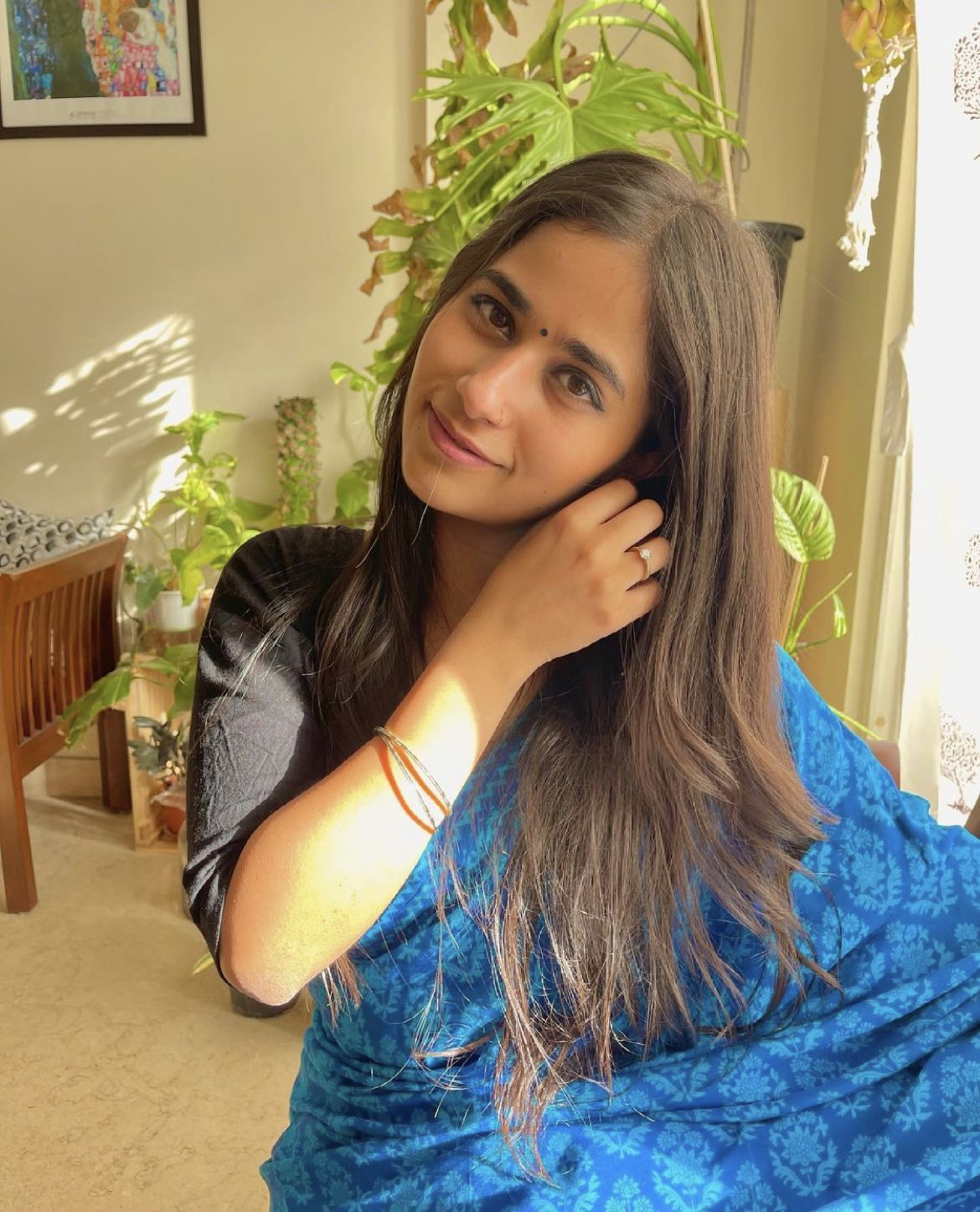
Aanya Wig dresses up in a traditional sari for her virtual graduation party as she graduates from Lady Shri Ram College, University of Delhi.
Aanya Wig dresses up in a traditional sari for her virtual graduation party as she graduates from Lady Shri Ram College, University of Delhi.
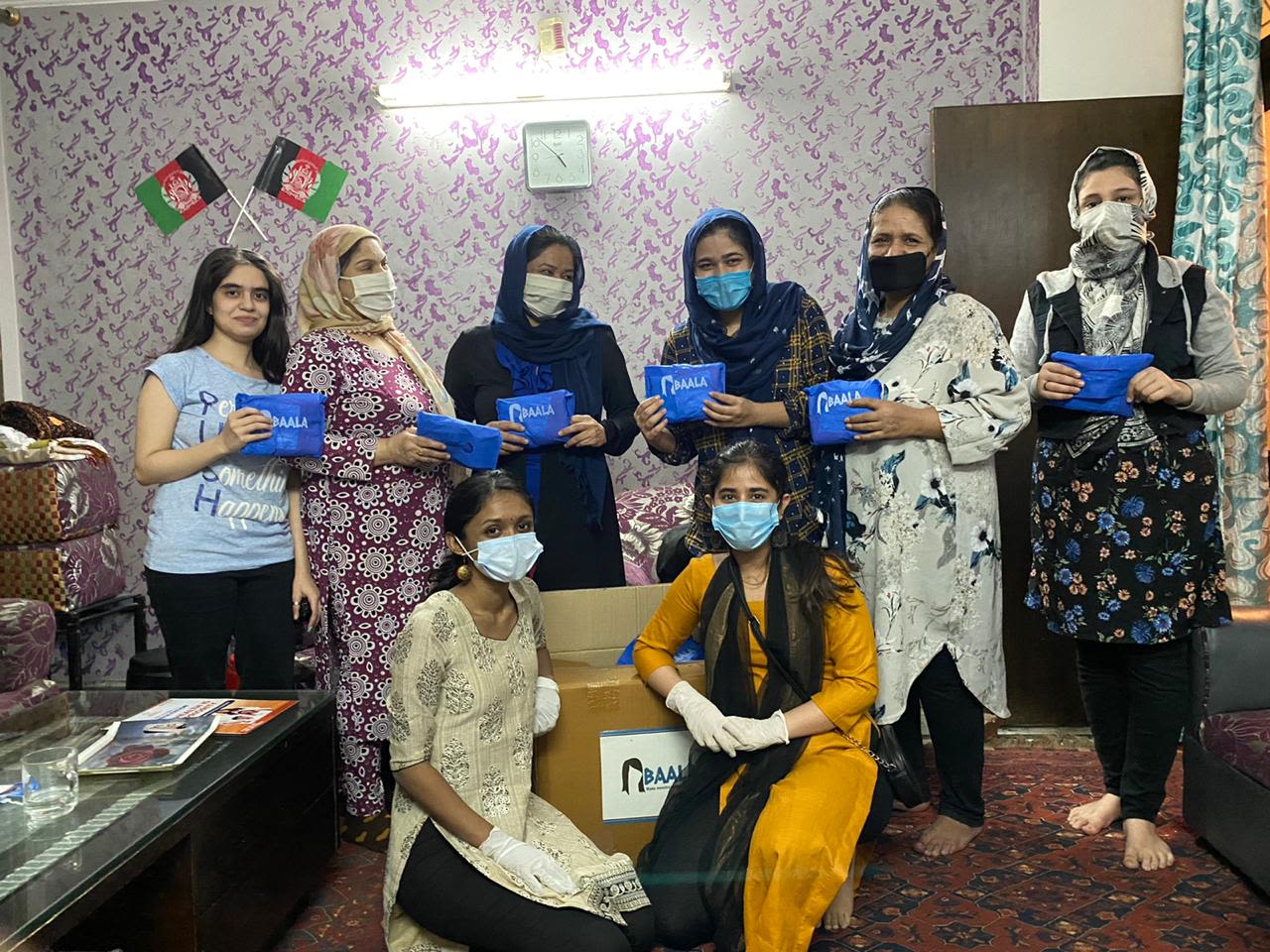
Wig, as a member of Pratisandhi, which works for women's reproductive health and sexual rights, donates menstrual pads to women.
Wig, as a member of Pratisandhi, which works for women's reproductive health and sexual rights, donates menstrual pads to women.
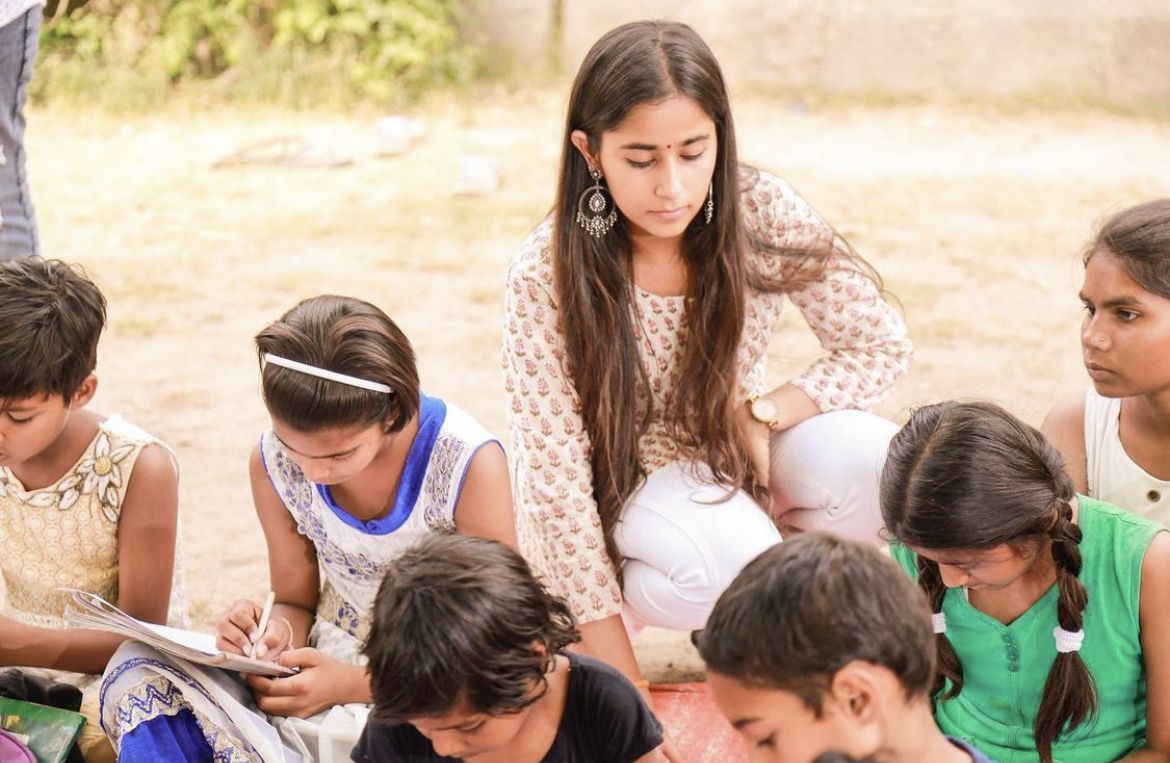
Wig involved with social work in a pre-pandemic world where she taught about safe and unsafe touch to children as a member of Pratisandhi.
Wig involved with social work in a pre-pandemic world where she taught about safe and unsafe touch to children as a member of Pratisandhi.
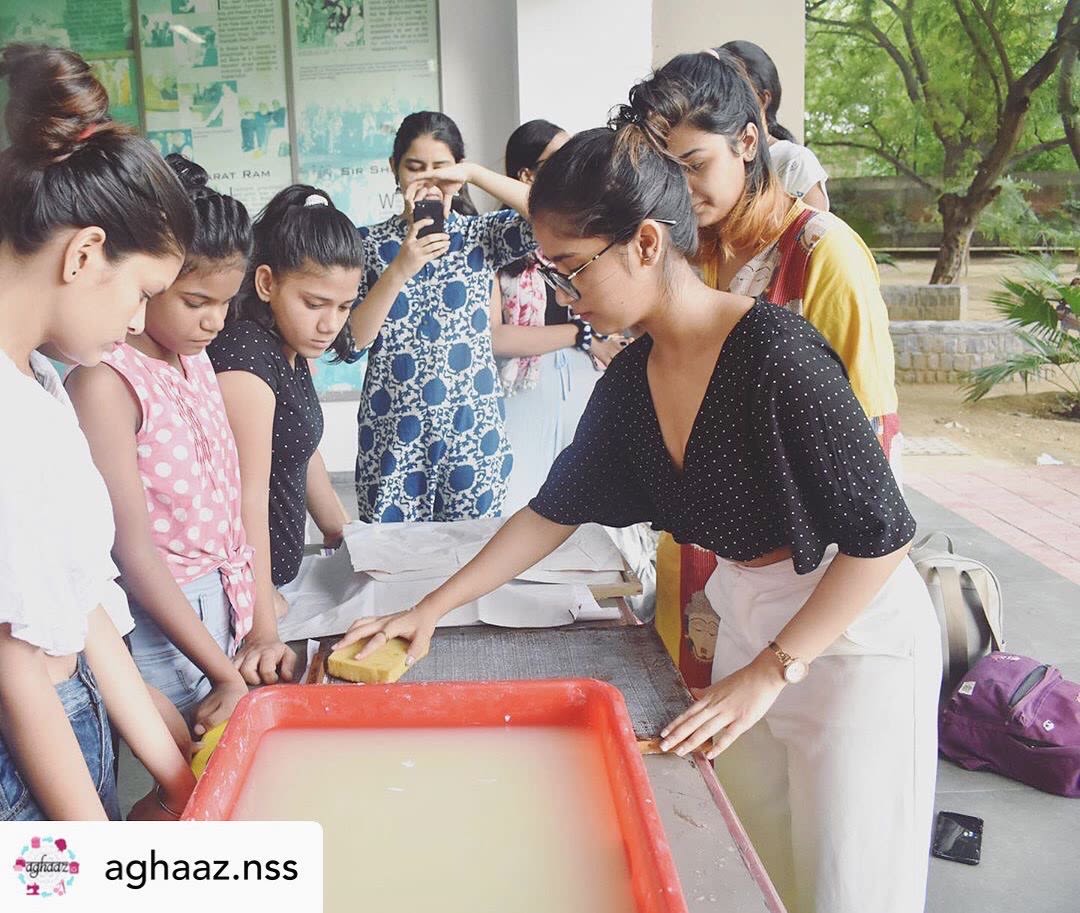
Wig as a member of Aghaaz, a student-led social entrepreneurship project that empowers women by providing them with skills. She teaches them how to make recyclable newspapers.
Wig as a member of Aghaaz, a student-led social entrepreneurship project that empowers women by providing them with skills. She teaches them how to make recyclable newspapers.
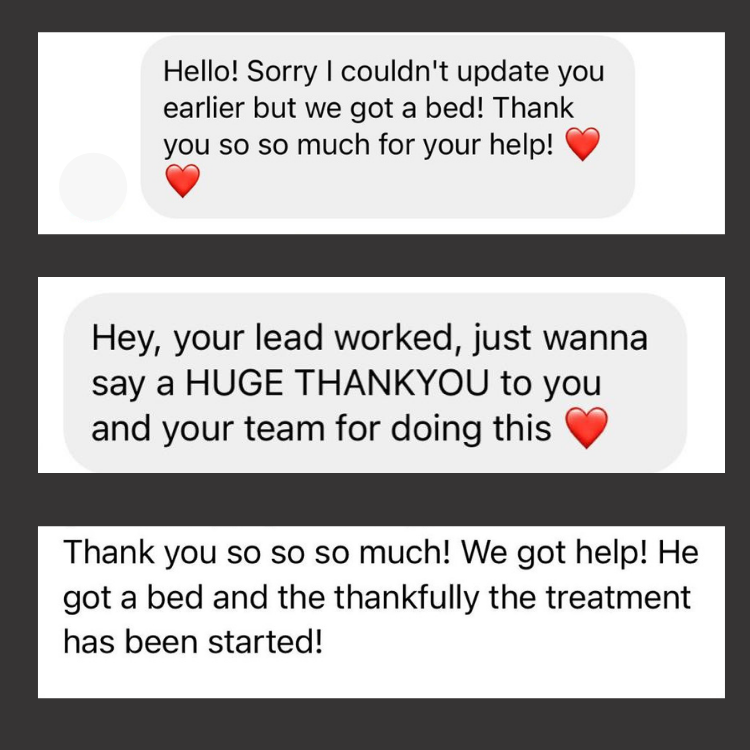
Some screenshots of help received by people. Photo by Aanya Wig
Some screenshots of help received by people. Photo by Aanya Wig

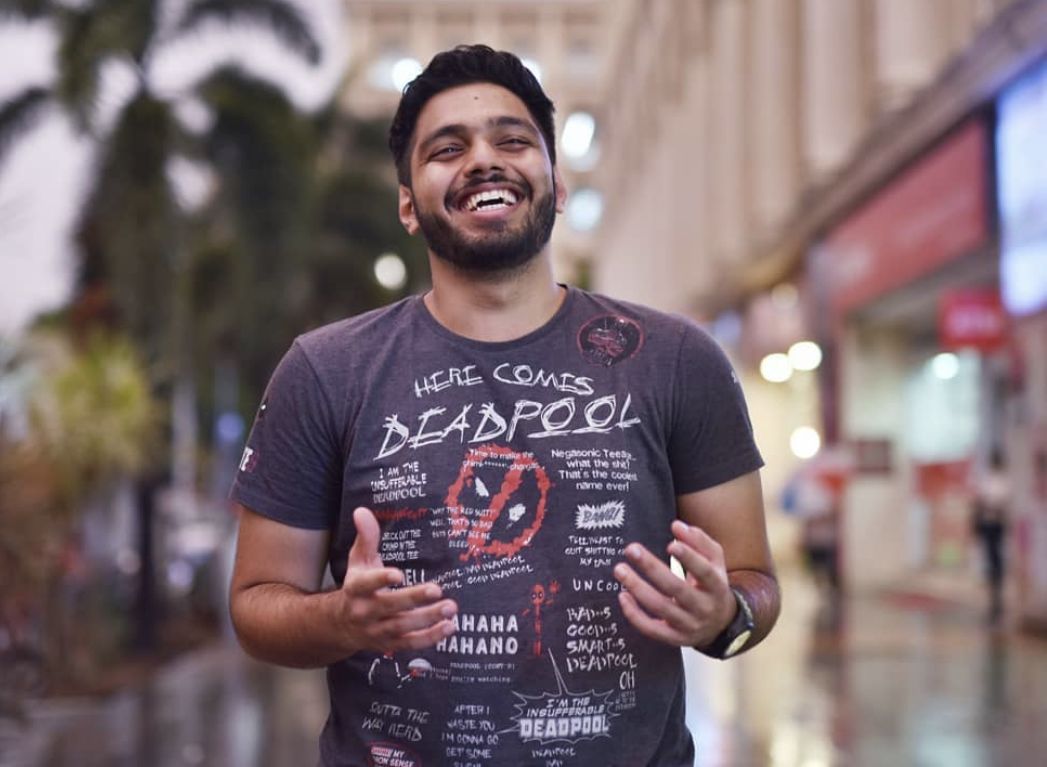
Anish Talpade during pre-pandemic times. Photo by Humans of Bombay
Anish Talpade during pre-pandemic times. Photo by Humans of Bombay
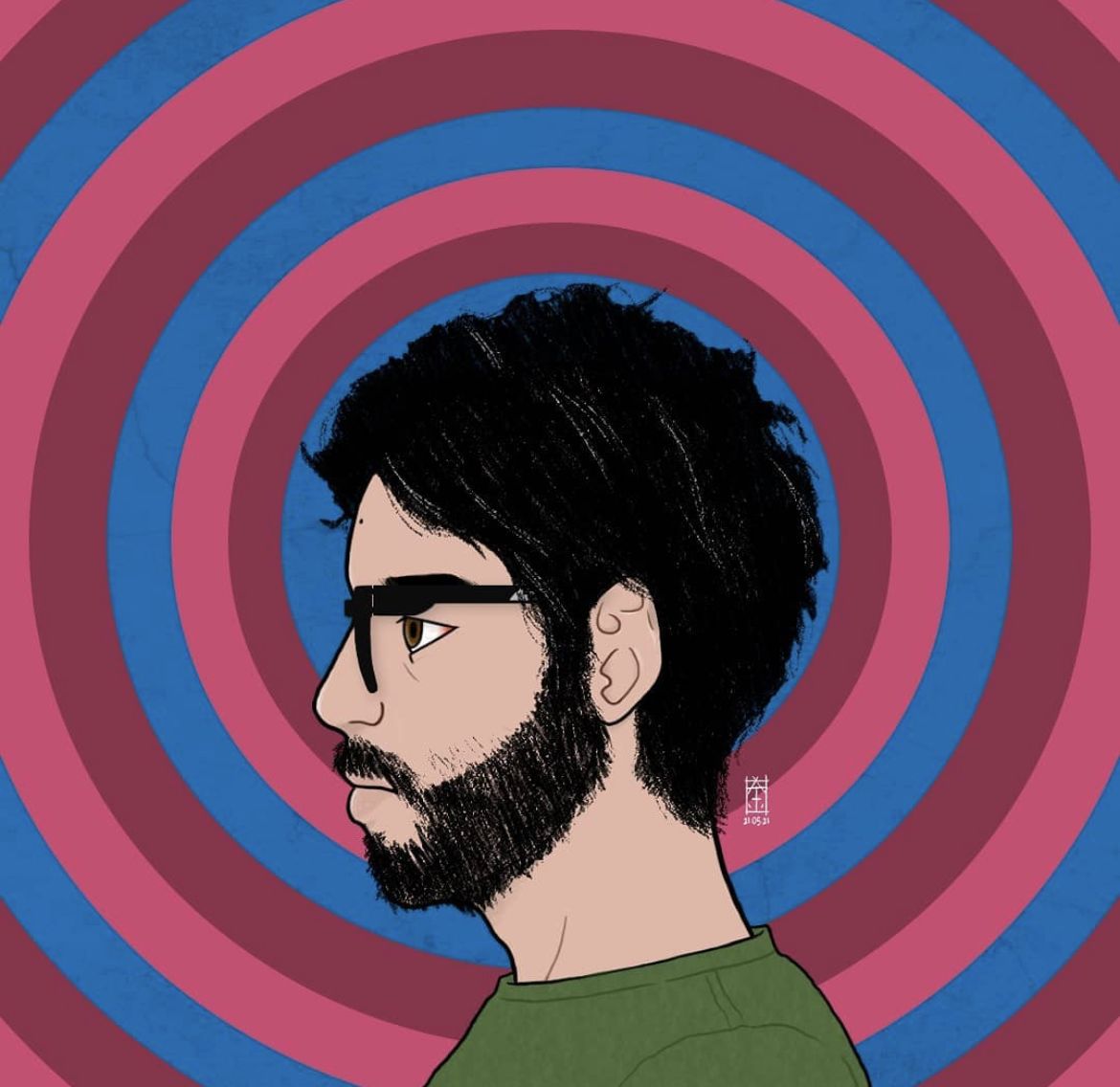
Self-portrait of Anish Talpade reflecting the "Many Moods of Moody Maestro #1. Visual design by Anish Talpade
Self-portrait of Anish Talpade reflecting the "Many Moods of Moody Maestro #1. Visual design by Anish Talpade
The first memories Anish Talpade has of his dad is him being in a drunken state and having ugly fights with his mother.
"Sometimes he would get so violent that we had to call the cops," he said. He remembers that when he was 10, his dad came home one evening and was furious.
My mother was so scared that he would hurt me or her that she quickly held my hand and rushed out of the house. We waited on the staircase, hiding, until the cops came. That's when my mother decided to file for divorce and asked my dad to leave the house, Anish Talpade told Humans of Bombay.
He soon spiraled into depression and anxiety. His mother was always there for him, but being a single mother she had to work a lot. And when COVID-19 second wave hit India, he thought he would lose his mother. This was one of the reasons that he started providing mental health support and social media resources to people in need.
Talpade saw people doing their best to try and help others so he jumped on the bandwagon and started putting up posts about organizations and volunteers who were helping others. "So that is how I ended up creating not only the awareness about needing to help others, but also used my social media to help others," he said.
Listen: Talpade Describes His Experience
Talpade's pre-existing mental health issues increased during the second wave. Seeing so much loss around him affected his anxiety, he said.
People are experiencing heavy anxiety, heavy depression and trauma, especially the one which is concerned with loss and PTSD, depending on the individual who is either overworked or is going through a relationship that is abusive, which has amplified. I've had these experiences.
He was speaking to a friend who had lost his mother, which was devastating for him. "Knowing the kind of jolly individual he was, losing his mother became the reason he was no longer cheerful. It was sad to see him like that," he said.
Many like Talpade's friend have faced depression, anxiety and stress symptoms due to the increase in isolation because of lockdowns, personal or family loss and grief.
Talpade had to take a week long break from social media to regroup himself. He would still spread awareness whenever possible, but he was not as engaged as he was before.
Talpade often would use social media to vent his feelings and provide emotional support to others.
He was having a conversation with his friend, providing him a lot of support. "A few days later, I messaged to check up on him. He broke the news down to me that his mother was no more. That was the tipping point where I felt that I could not handle losses personally."
He would still go on Instagram, check up on people, have a conversation with them, and see how they were doing. But after a certain point, he could not handle it. "It was overwhelming," he said.
He turned to art and writing to heal himself. One of his self portraits reflects his many moods during the pandemic.
With the help of graphics, he also spread COVID-19 information on his platforms as well as created animations to spread awareness.
Now that the number of cases have lessened, Talpade feels relieved. His relationship with his mother is much better.
"Initially, I think we just used to meet every night whenever she used to come home from work late, and we had a little bit of a conversation," he said. However, ever since the pandemic he had an examination done for his mental health issues.
I sat with my mother, talked about it and gave her clarity about what went on for me in the early stages of the divorce, how it affected me and how it is taking shape now as an adult. So, a lot of those things finally opened up after years. And I think me and my mother, though we get annoyed from time to time sitting in the same place because we are quite outgoing individuals, I think our dynamic has changed a lot for the better. And I'm really happy that happened.
However, when a coronavirus case occasionally pops up in their neighborhood, they get paranoid easily and do not step out of their house.
Talpade stopped volunteering after the second wave ended. "I do not know whether my help reached people on time, I could only hope it did because after I stopped, I realised how much help I needed myself. So, my focus in the aftermath was just my healing," he said.
Talpade believes this paranoia might stay till things get back to normal, which he believes will not be any time soon. He fears the new variant, Omicron, might cause the third wave in India.
"The third wave is a huge possibility considering how the second wave was handled in the country," he said.
He added that if India has learned anything from the second wave, the government will not mismanage like they did. "I don't know if we'll be well-prepared but I just wish there was a universal vaccine for everyone that is universally accepted and not patented."
Talpade braces himself for a lockdown as Maharashtra state from where he belongs has 28 suspected cases of Omicron as of Dec. 3, 2021. “I am ready to take all the required precautions to avoid or limit my exposure to the outside world again. It is sad that we continue to struggle with COVID-19. I will do my best to help whenever necessary," he said.

Niharika Roy, 16, is a student at Amity International School. She is the founder of Drop & Find, a social organization developed during the peak of the second wave.
She was inspired to see the kind of work people were doing on social media to collect resources for COVID-19 patients and wanted to do the same. But, she never took the time out to do so. After an incident occurred with her own family, she was truly motivated to start Drop & Find.
She said it was very traumatizing when she found that her cousin's grandma while traveling with oxygen support in an ambulance was threatened by the ambulance driver.
"The person in the ambulance was threatening to leave them, to abandon them if they didn't find a hospital, which was natural because ambulances have to attend to other patients as well," she said.
They were getting threatened that if they could not find a hospital with an oxygen bed in some time, her cousin’s grandma would be abandoned. “I was sitting at home while this was happening, and that is the exact moment it struck me that I had to do something. I can't just sit and watch people die.”
Her cousin’s grandma traveled around the city and found not a single hospital. Finally, after hours, they found one where an oxygen bed was available.
They stayed overnight. Her oxygen levels fluctuated but were stable in the morning.
"So, I was very thankful for the number of contacts I received from strangers. It was so overwhelming and not just that, they were sending it in time, catching up to see whether my cousin’s grandma was okay, and whether her oxygen levels were stable. There was genuine concern from their side,” she said.
Listen: Roy's motivation
Roy did not have a vast social media presence to be able to pull off Drop & Find, but her belief in her cause made her persevere through the unusual circumstances.
Her initiative got amplified when she created a volunteer intake form which she then circulated through Instagram and WhatsApp.
"We have more than 200 volunteers and around 60 people who are fully dedicated to the cause," she said.
We have a Discord server where I have made different rooms and assigned specific roles. We have certain people for posting the leads we get on social media. We have people for texting, people for calling, people addressing requests, and people editing the spreadsheets, so it's very organized. We have divided the whole thing in such a way that people feel they can help.
Listen: The verification process
Roy said that there was not only a demand for oxygen and ICU beds, but there were several plasma requests which could only be arranged on a personal level.
“I can't just say that this person has plasma. You have to match the requirements, and then that person has to have some requisites to donate plasma,” she said.
She added that oxygen cylinders and concentrators were something they could arrange. However, there was a problem that arose during that time. “The prices were shooting up, so a lot of black marketing was happening,” said Roy.
They faced issues finding ICU beds as finding an oxygen bed was easy.
“Because what is an oxygen bed? It is just a bed with some oxygen supply attached to it, while ICU beds were tough to find as there was no hospital no matter where it was situated, where ICU beds could be found,” said Roy.
The number one issue Roy and her team faced was getting police threats.
I was hearing so many people say that the police were clamping down operations because of promotion of resources which might be black marketed. The problem was that they were not doing anything from their end, and now when one is helping people, we’re getting threats that you cannot proceed with this. But, again, this was because the resource might be black-marketed, and we were not taking personal responsibility. But that is something that we mentioned that we cannot be physically present to arrange resources and only do what we can.
The other issue was that of fraud.
Listen: Roy cites an incident where they were almost defrauded
The third and most disturbing issue they were facing was harassment.
We are a bunch of teenagers at the end of the day, and when we are contacting random numbers, we are facing harassment as we don't know who these people are. We take precautions and only go ahead and call them if they are suitable and ask for details such as pictures. But at the end of the day, we are still at risk. A lot of our volunteers are facing harassment. I feel so bad for them. So many of my volunteers are getting calls from strangers like spam calls saying disturbing things, and it was extremely disheartening to see that.
This did not stop Roy and her team. She took action.
“I have all of the numbers saved of the spam calls and screenshots of the chats. And since we are a youth community that was so active during that time, there were also a lot of lawyers who came up," she said.
The lawyers said that they were tailor-made for this and, “If you face any sort of online harassment, or if you face online fraud, you can contact us.”
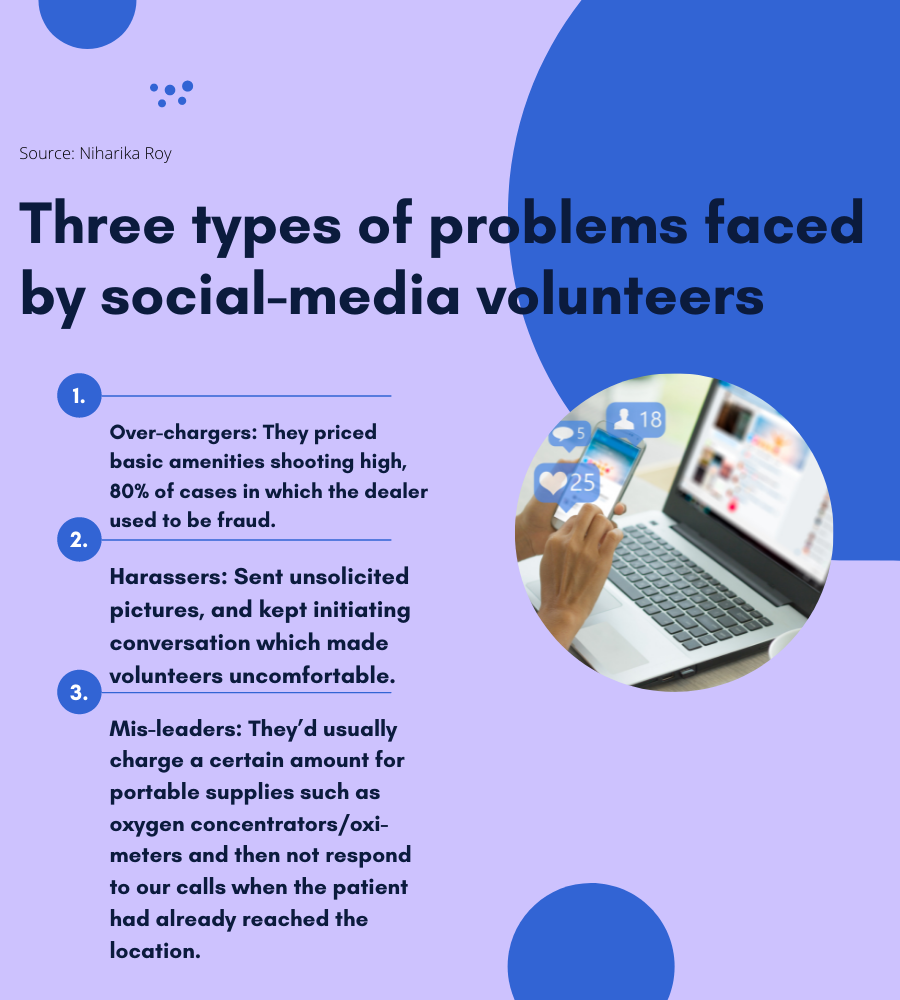
The worst thing that happened to one of Roy’s volunteers was when she received a very perverted image. Roy told her volunteer to keep the chat saved for proof and delete the image. Her volunteer kept the number, and the conversation was saved for future reference.
Seeing the light in a negative situation, Roy said that it was a good thing that happened in a way. “At the end of the day, we can put up the numbers and say do not contact them. We have a social network where we can tell people not to call these numbers,” she said.
“Even if you're not successful in getting the resource, even if the supplier is not genuine, we can differentiate between these people, and we can forward it to our network. So, we have a database of contacts one should not trust for resources.”
Roy narrated one amusing incident that happened to her.
“Firstly, one of my friend’s mom's oxygen dropped around 50. They could not travel or do anything. So, we began arranging the oxygen cylinder immediately. We contacted every number we possibly could,” she said.
One person, along with Roy, contacted the same number for verification. So, when Roy contacted a number, they told her that they had an oxygen cylinder available and told her the price for it, making up vague details.
“But since I was so desperate, I fell into the trap and started asking for the size and other things. And once I was done with the phone call, I believed I had arranged the cylinder,” Roy added.
However, when one of her volunteers called the same number for confirmation of further details, they refused and said they had no cylinders and started asking questions about who he was and so on.
“So, I contacted the supplier again and asked why he said no to somebody else, to which he responded by asking who I was and how I got his number. This was very irritating. I spent all this time only to hear this.”
School and college closures due to the lockdowns in India gave a chance to Roy and many like her to start collecting social media resources.
Board examinations for tenth grade getting canceled gave Roy enough time to carry out this work. Moreover, two or three months automatically freed up as those were purely for studying for the exams.
“I was pursuing my hobby of graphic designing side by side, but I always like to do some constructive work as well," she said.
She added that at the peak of the second wave, she was idle.
"Sitting there doing nothing. I felt terrible. I was taking tuitions for eleventh grade, but my academic and co-curricular activity schedule for school was not hectic, so I could manage the work pretty well,” Roy said.
On June 9, 2021, the Delhi government announced the resuming of classes.
Roy felt that those extra classes were a burden to her schedule where she was constantly helping people.
However, she said the number of requests had gone down drastically, so she could invest less time from her side.
Roy said that after all the time she spent collecting resources, she forgot about her own mental health.
My mental health is a joke. I have always been very emotional and sensitive, and I can never cope with any small change that happens to me. But at the end of the day, once we're done satisfying requests for the day, my volunteers are so diligent that they wake up even at night and help out.
They held Zoom meetings to cope with the mental stress, which allowed them to even laugh about the perverted messages and images they received. “And of course, there’s Netflix, where we hold parties and have fun," she said.
Roy also arranged a group art therapy session for her volunteers to explore self-expression and, in doing so, find new ways to gain personal insight and develop new coping skills.
She also arranged a group art therapy session for her volunteers to explore self-expression and, in doing so, find new ways to gain personal insight and develop new coping skills.
Designing graphics also helped Roy deal with mental stress, especially creating menu cards for her dad’s restaurant.
“I got to spend quality time with my family while designing these graphics and thoroughly loved that,” she said.
When COVID-19 hit, my father’s restaurant business took a real hit since people stopped dining in, and ordered food online. My father had to shift to a new business model. I helped him create menus. I did this with both my parents, and each menu card took about a week to complete. This way, I was able to spend quality time with them while graphic designing. And didn’t worry about school at the time I used to design them.
Menu card designed by Niharika Roy.
She also designed graphics for Saarathi. “Saarathi is basically a COVID-19 application. It's basically Google Maps, but has an additional feature of telling you how Covid free and safe a route is. This is done using six artificial intelligence algorithms,” she said.
Roy stopped the process of collecting resources and circulating them around July. “I decided to end it because people were usually able to find resources in their own states.”
At first, she felt very weird because before stopping it, every single day of hers was spent along with 100 other people who were continuously on calls or chats to ensure that people pan-India do not lose their loved ones. “I felt blue for a couple of days, but then relief set in. I was happy the government finally had the coronavirus under control, and we as the youth were able to handle the times when they could not do anything.”
She has, to date, kept the spreadsheet link active so people can access mental health resources, plasma donations, and other resources.
She feels the third wave is bound to come, but the symptoms would be easier to detect this time, and hospitalization won’t be necessary in most cases since most people are vaccinated.
She added that Omicron is predicted to be more infectious, and imposing necessary lockdowns and people following the general guidelines will become very important.
She added that when she read the news of five patients in Karnataka testing positive for the Omicron variant, she felt that it’s definitely worse for a variant to be more infectious, than how severely it hits us. “We’ve just got the situation under control, and the number of cases and deaths have reduced drastically since the second wave,” she said.
Fighting a new variant altogether will require team spirit which will only happen if the government is ready to listen to us, and we are also ready to listen to the government. I’m definitely scared. I have my grandparents living with me, and it would be really harsh on them if they are infected with the new variant. My grandfather’s health has already deteriorated due to the second wave and I can just hope, pray, and increase awareness about COVID-19 protocols to minimise the number of deaths. Or else, as it’s said, coronavirus is the Earth’s vaccine, and we are the virus.
As for her team, she says they are ready to help people all over the country if needed. "This time, we will help not just humans but also animals. We will even fight fake and unscientific rumors spreading, leading to many pets being abandoned. I hope we can help each person this time along with stray animals, so we can all stay safe and lead a healthy life!"
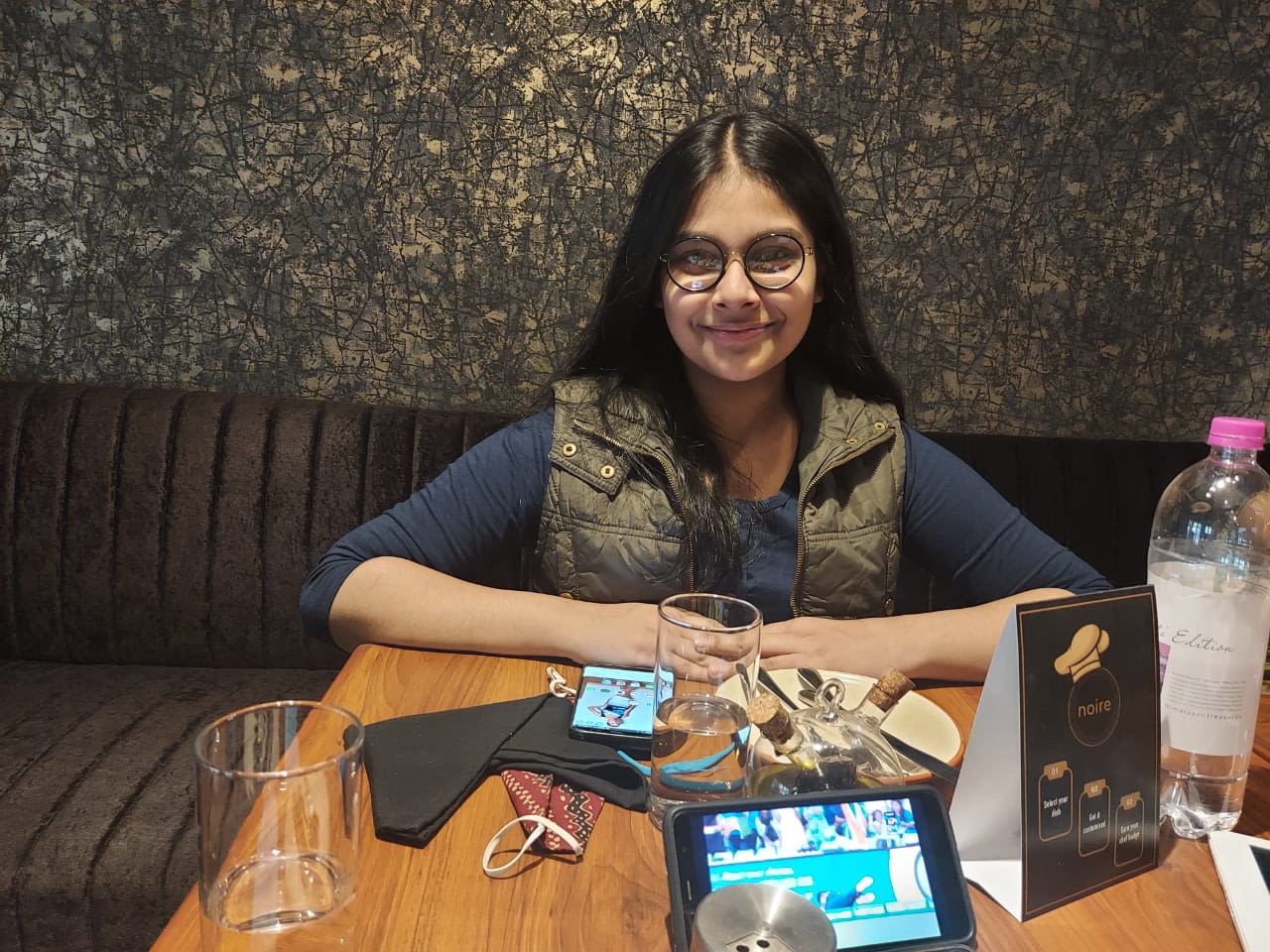
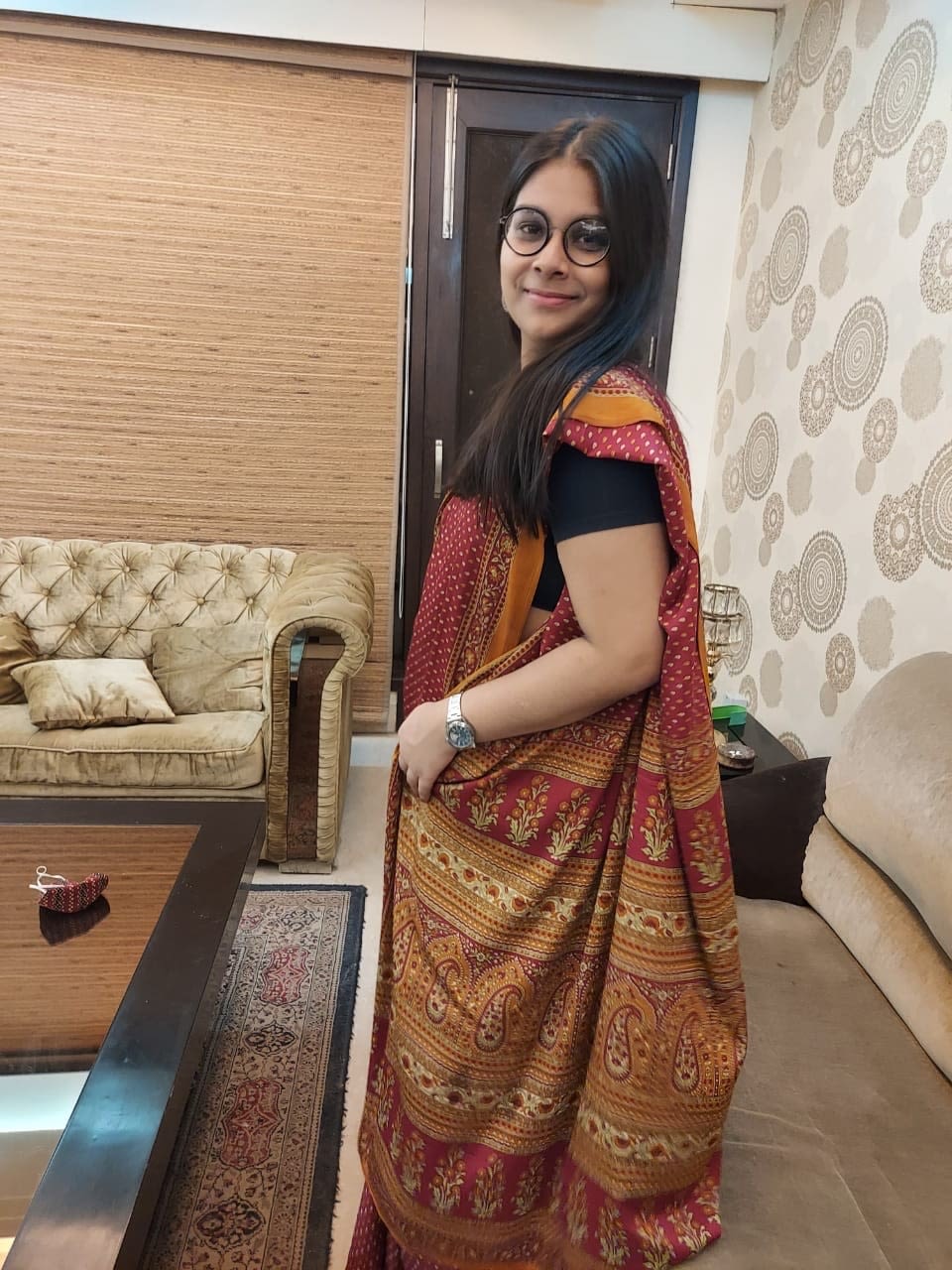


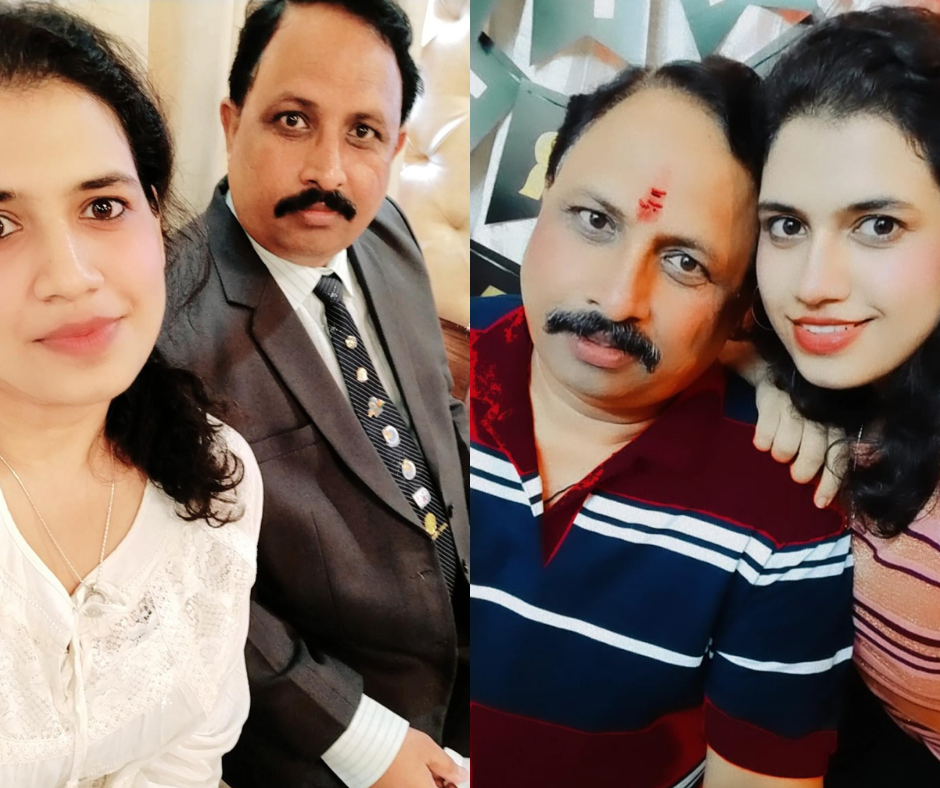
Pranshu Mishra with her father, Ashutosh Kumar Misra. Photo by Pranshu Mishra
Pranshu Mishra with her father, Ashutosh Kumar Misra. Photo by Pranshu Mishra

Mishra's father, Ashutosh, spending time outdoors, pre-pandemic times. Photo by Pranshu Mishra
Mishra's father, Ashutosh, spending time outdoors, pre-pandemic times. Photo by Pranshu Mishra
Pranshu Mishra is a 21-year-old, microbiology student from Pune University in Maharashtra state. When the second wave came, she got to know from a lot of her friends that people were actually dying out there and it was a huge crisis.
After hearing about the stories her friends would tell her which were graphic and disturbing, Mishra decided to do something about it.
So, she joined a private WhatsApp group started by her friend, Ishu Dixit, which is based in Lucknow, Uttar Pradesh state. The group consisted of a repository of resources, from oxygen cylinders, ICU beds, to medicines being used to treat severe cases of COVID-19, which had been collected by the volunteers through social media platforms like Facebook, Instagram, Twitter, Discord and Telegram.
They would post a lead on the group so that if anybody needed those resources, they could easily contact Mishra or any other volunteer. The group ended up having more than a hundred people.
The requests they would get ranged from oxygen cylinders to beds. “But, more requests in May and June were coming for injections and medicines like Remdesivir and Liposomal injections,” she said.
In the last week, since the time of this interview, she was working on connecting plasma donors to those who needed it. And at the time of the interview, she was working on three cases of blood donations.
On one of the days, while she was collecting leads, she discovered that her father had tested positive for COVID-19. Mishra, away from home, for the first time started collecting leads for her own father.
When Mishra’s father had tested positive for the virus, she was stressed as she was not only supporting other people mentally but now had to help her own father. “I would tell other people to not panic as this would pass but when my father was detected, I was panicking and had plans of coming down to meet him. My friends in the group would then console me. By God's grace, he was not in a serious condition. It was a minor infection,” she said.
She feels one of the setbacks of helping is the pressure that comes with it. "Once you start, there is no way to stop. People would call me asking me where I am if I step back for even 10 minutes."
It was mentally taxing for Pranshu to work day and night to collect leads. One thing which helped her was the gratitude that people had when she was able to help them.
She also enjoys cooking, dancing, reading and writing, so engaging in those hobbies helped her overcome the exhaustion. Without this, she believes she would have gone crazy.
There are certain things you cannot share with anyone and that way poetry helps me vent out those feelings. During the second wave, it it was even more healing because there were people who would come to me and vent their anger. If one gets a lead which is not available anymore due to shortage of resources, they'll come and let out their frustration on me. I used to think that I am helping selflessly then why are people not understanding what I am going through. So, writing helped.
According to Mishra, there was a severe undercount in the number of deaths being reported. "I stopped watching the news completely. If there are 200 to 300 deaths happening in my area daily, how can there be 700 deaths in the entire state? I don't understand this statistic. What are they trying to hide? It is right in front of us." she said.
She advised everyone in her family to not believes these numbers. One other reason was the negativity television news brought.
Listen: Mishra's thoughts on the news
Mishra has been living a mundane life since the pandemic first began. Her routine has been the same; waking up, getting ready for virtual class, having lunch, classes ending, working out and then dinner. But since the second wave, she has been managing classes and volunteering side by side.
To get out of this monotonous groove, every fortnight, they plan a party at home.
Listen: Mishra's coping mechanisms
Her relationship dynamic has also changed drastically with her family. She was someone who was always out of home before the pandemic but now staying at home all day has forced her to change her habits. "I was someone who never had lunch before and would go to the college canteen, grab a snack and that is all. Being at home, my mother constantly nags me to have lunch with them, so I have started having healthy meals everyday," she said.
She believes she has reconnected with her family during this time. They have disagreements on many things but at the end of the day, Mishra enjoys it. "We talk more so disagreements are bound to happen. But we have discovered so much about each other in the last few months."
The fear of a potential third wave looms in India. But, Mishra is hopeful the Omicron variant won’t lead to a third wave.
With major portion of the population vaccinated and the awareness the second wave brought, it is unlikely a terrifying wave will hit us again. In India, research is going on to develop an indigenous vaccine
“If it does come, I am ready to do this all over again,” she added.
Listen: Mishra's poem on hope
Looking Forward
The World Health Organization on Friday said the Omicron variant has been detected in 38 countries, up from 23 two days ago, with early data suggesting the strain is more contagious than the Delta variant.
As the Omicron variant cases increase steadily in India, an IIT scientist has warned that the third wave of coronavirus could reach its peak by February.
Manindra Agarwal, an IIT scientist who is involved in the mathematical projection of the trajectory of COVID-19, has warned that the cases can reach upto 150,000 per day in India till February. Through his forecast he has warned that the third wave of coronavirus will hit its peak by the second month of 2022.
The same warning has been backed by the Indian Medical Association (IMA). "At a time when India is limbing back to normalcy, this is a great setback. If we do not take adequate measures, we may have a massive third wave," it said.
They suggest partial lockdowns, booster shots and mandatory masking to be implemented all around the country.
The volunteers hope the third wave never comes. But if it does, they are ready to help all over again.
Credits: Front page graphic made by Tanishq Wadhwa, Timeline information from The Indian Express; Background photographs in Founder, Drop & Find courtesy of Niharika Roy
